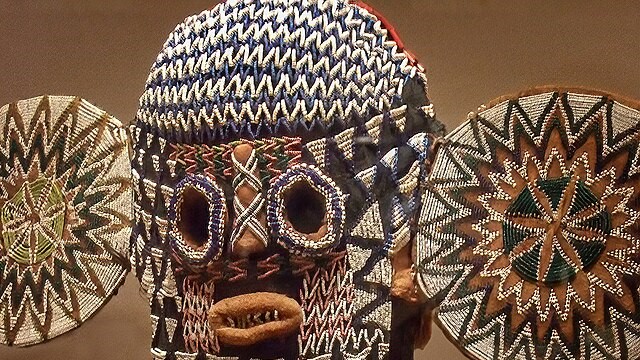In the geographic heart of Central Africa, Cameroon unfolds as a nation of contrasts—its terrain shifting from coastal mangroves to volcanic highlands, its communities weaving together centuries-old traditions with the textures of modern life. The moniker “Africa in miniature,” often applied to its diverse geography, extends easily to its cultural landscape, where heritage and contemporary influences exist side by side.
In the kitchens of Douala, Yaoundé, and towns across the countryside, the nation’s cultural diversity takes form in its food. Ndolé, a stew of bitter leaves, ground peanuts, and meat or fish, anchors festive tables as much as weeknight meals. Ekwang, painstakingly prepared by wrapping grated cocoyam in leaves before simmering it with spices, fish, and meat, speaks to the patient craftsmanship of traditional cooking. In the streets, skewers of spiced meat—known as soya—sizzle over wood-fired grills, while puff-puff, small orbs of fried dough, are sold from trays balanced on vendors’ heads, still warm from the pan.
Clothing, too, reflects this fusion of eras. The flowing boubou, worn by men and women alike, retains its status as ceremonial attire, its fabric often embroidered with elaborate patterns. The kaba, a loose dress embraced for its elegance and comfort, remains a staple of daily life. In recent years, designers have begun pairing these traditional silhouettes and fabrics with contemporary tailoring, sending hybrid styles onto both local runways and international showcases.
Art offers another lens into Cameroonian identity. The Mus’art Gallery in Kumbo houses a collection of over 400 works—from bamboo sculptures to finely detailed wood carvings—that document both the creative traditions and the evolving craft of the nation’s artisans. Beyond the visual arts, spoken-word performance has surged in popularity, particularly among younger voices. Artists such as Boris Taleabong Alemnge, known as Penboy, use poetry to address themes of social change, inequality, and the tensions within Cameroon’s English-speaking regions.
The country’s festivals are no less expressive. In the grassfields of the Northwest, the Nguon Festival gathers the Nso people in a celebration of history and communal ties, with processions of dancers, musicians, and costumed performers moving in step with rhythms that have been passed down through generations. These events serve not only as entertainment but as acts of preservation, reinforcing collective memory in an era of rapid change.
Cameroon’s cultural fabric, however, is not without strain. Human rights advocates have expressed concern over a rise in anti-LGBTQ rhetoric, fueled in part by popular songs promoting violence. Such developments stand in sharp contrast to the broader ethos of resilience and inclusion that many communities continue to uphold. Yet, even amid these challenges, the country’s cultural vitality endures, sustained by the creativity and adaptability of its people.
From its cuisines and clothing to its art and festivals, Cameroon’s lifestyle embodies a living archive—a record of adaptation, endurance, and pride. As the nation navigates the demands of the present, its commitment to preserving and celebrating its heritage remains one of its most enduring strengths.
Sources:
- See Africa Today, “Cameroon’s Lifestyle and Cultural Identity.”
- Africa Lifestyle, “Cameroonian Cuisine and Street Food.”
- WorldAtlas, “Cultural and Artistic Heritage of Cameroon.”
- AP News, “Cameroonian Poets as Voices of Change.”
- ChefReader, “Nguon Festival Traditions.”

